The flag of Colombia is a vibrant and proud symbol that embodies the nation's rich history and values. Its design, consisting of three horizontal stripes—yellow, blue, and red—is a direct legacy of Gran Colombia, the state that once united modern-day Colombia, Venezuela, Ecuador, and Panama. Adopted in its current form in 1861, the Colombian flag is a powerful reminder of the struggle for independence, natural wealth, and shared regional ties.
A Detailed Look at the Flag's Design and Symbolism
The national flag of Colombia is a horizontal tricolor. The most distinctive feature of the flag is the proportional size of its stripes. The top yellow stripe is the widest, taking up half of the flag's vertical space. Below it are two equal stripes: a blue stripe and a red stripe, each occupying a quarter of the flag's height.
The colors of the flag hold profound and historical significance, dating back to the flags of Gran Colombia, a federation that was liberated from Spanish rule by the iconic figures of South American independence.
-
Yellow: The top yellow stripe is a symbol of the country's sovereignty, justice, and autonomy. Its dominant width represents the immense wealth of the Colombian soil, including its gold, natural resources, and the vastness of its land. It signifies that the people's prosperity and natural abundance are the nation's most precious assets.
-
Blue: The middle blue stripe represents the skies, the seas, and the rivers that surround and crisscross the nation. It symbolizes the two great oceans—the Pacific and the Atlantic—that border Colombia, as well as the numerous rivers that are vital to its life and economy. Blue also signifies the truth and the loyalty of the Colombian people.
-
Red: The bottom red stripe is a tribute to the bravery and courage of the heroes who shed their blood for the nation's independence. It is a powerful reminder of the sacrifices made during the battles against Spanish rule and the determination of the patriots to achieve freedom. Red also symbolizes the love and unity that bind the nation's citizens together.
The History and Creation of the Flag
The history of the Colombian flag is deeply intertwined with the history of its regional neighbors. The design is attributed to the Venezuelan revolutionary Francisco de Miranda, who created the original flag for the nascent state of Gran Colombia in 1806. Miranda's tricolor, which was also adopted by Venezuela and Ecuador, was based on his belief that these colors represented the struggle for liberation from Spain. He is said to have chosen the colors to symbolize a bridge between the golden land (yellow), the blue sea (blue), and the bloody Spanish rule (red).
After the dissolution of Gran Colombia, each of the successor states—Colombia, Venezuela, and Ecuador—retained a variation of the same tricolor flag. The current Colombian flag, with its specific proportions, was officially adopted on November 26, 1861, by law. The adoption of this flag solidified its status as the national symbol of the newly formed United States of Colombia (which would later become the Republic of Colombia). The flag has since remained a consistent symbol of the nation's identity, despite the various political changes that have occurred throughout its history.
Meaning and Significance for Residents
For the people of Colombia, the flag is a beloved and powerful symbol of patriotism and national pride. It represents not only their sovereign nation but also their shared historical roots with their regional counterparts. The yellow stripe's prominence is a source of pride, reminding them of the country's natural wealth and the importance of its people. The colors collectively tell a story of a people who fought for their freedom and who are committed to a future of prosperity, unity, and peace. The flag is displayed with great respect and honor during national celebrations, such as Independence Day (July 20th), and serves as a rallying symbol that unites a diverse population under a common identity. It is a visual representation of their collective journey, from the struggles of the past to the aspirations of the future.
Interesting Facts
-
The Colombian flag shares its design and colors with the flags of Venezuela and Ecuador, a direct result of their shared history as part of Gran Colombia. The key difference lies in the proportional width of the stripes and the presence of any national emblems.
-
The specific dimensions of the flag are legally defined. The yellow stripe must be twice the width of the blue and red stripes, a feature that distinguishes it from the flags of its neighbors.
-
The flag is an integral part of various Colombian traditions and is flown at half-mast on days of national mourning, such as the anniversary of the death of a significant national figure.
-
A variation of the flag with a national coat of arms is used by government and military bodies, but the civil flag (without the coat of arms) is the most common version and the one used by private citizens.
-
The yellow-blue-red combination, attributed to Francisco de Miranda, is one of the oldest flag designs in continuous use in the Americas.
In the demonstration images, full-size flags are shown with proportions of 2:3, and hand-held flags with proportions of 1:2.
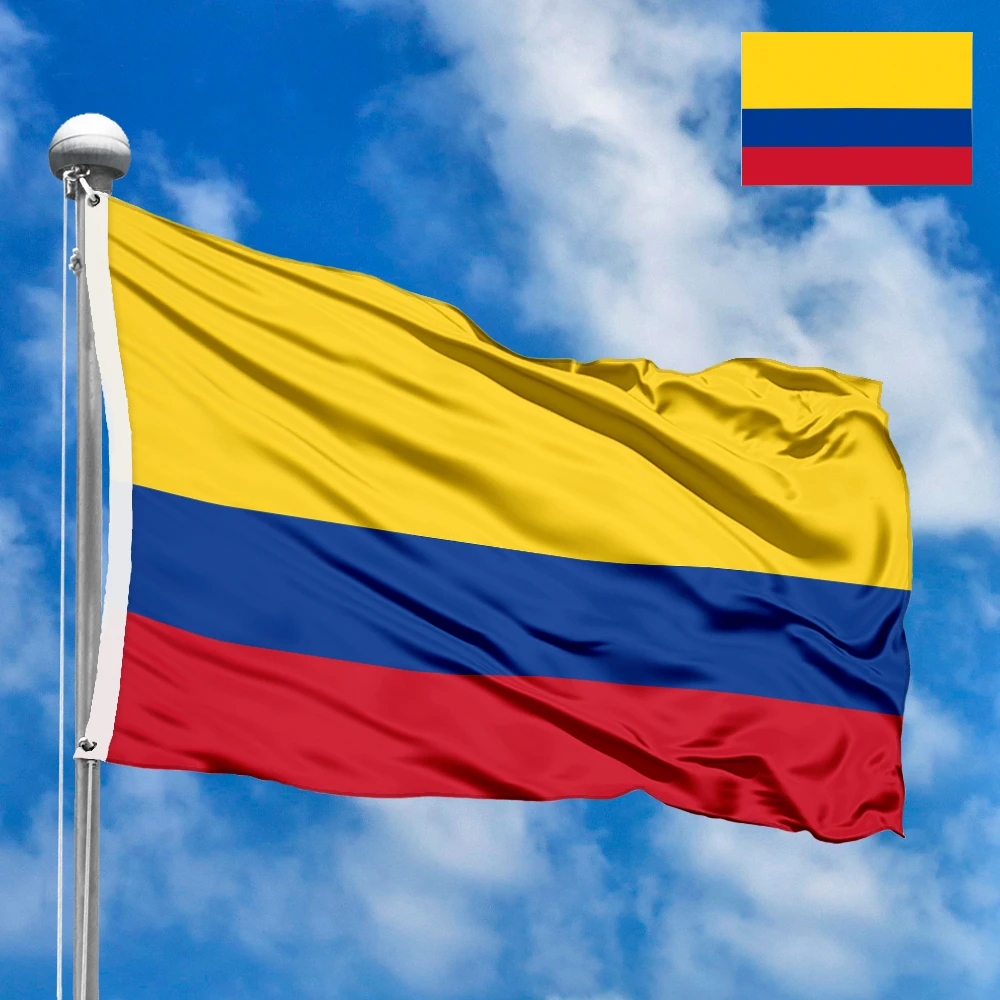

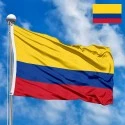
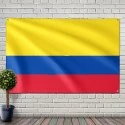
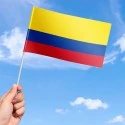

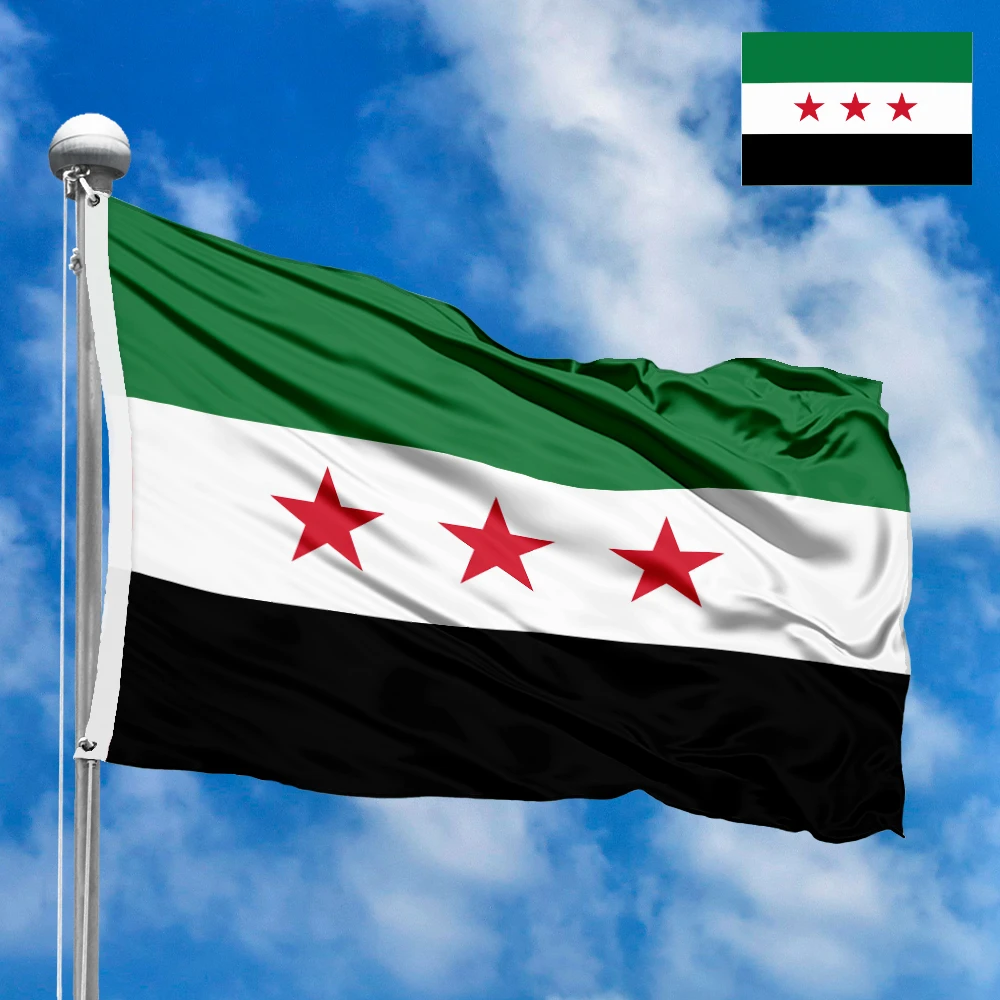

 Waving flag
Waving flag
 Sizes:
Sizes:
 Round flag
Round flag
 Sizes:
Sizes:
 Rectangular flag 2:3
Rectangular flag 2:3
 Sizes:
Sizes: